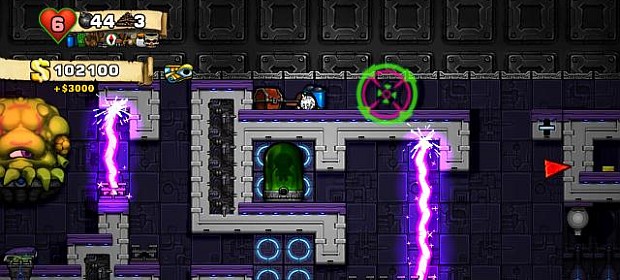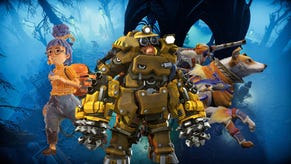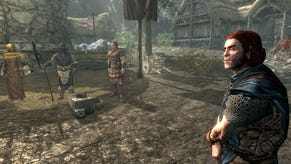Bats, Man! On Spelunky's Killing Joke
On Design
Spelunky is, I think, better designed than any other roguelike, platformer, or roguelike platformer. It's not because it's a work of genre revivalism. It's not the procedural generation, which jumbles level geometry upon every funny, frequent, fist-shaking demise.
It's the bats. The bat, found in its opening world, is a dimly flapping lense through which the entire game can be better appreciated.
Every journey into Spelunky's random levels contains the same set of deadly obstacles. Spikes, dart traps, snakes, spiders, giant spiders, those bats and so on.
Unlike the level geometry, enemy behaviour is consistent: dart traps always fire from the same range and do the same amount of damage, spiders always jump the same distance, and the bats - those bats! - always flap towards you at the same predictable angle, blindly bumping into anything in their way.
Every game has defined rules, which help give the player a sense of progress as they learn and master them, but I think it's rare for simple rules to complement one another as well as they do in Spelunky, and for them to do such a good job of directing and rewarding the player's actions.
Here is what happens: you're moving around the floor of a layer of a level and you don't notice the bat on the ceiling. It wakes up and starts to flap down towards you. It comes at you slowly at a sharp angle, moving for the top of your head.
Your basic weapon in Spelunky is the whip. It - like most of the other weapons - is designed to fire horizontally. You can't use it to attack upwards, to where the bat is slowly drifting towards your hat.
So what are you going to do? This is what you're going to do the first time (and what I did the first hundred times, because I'm a slow learner): you're going to run away, as fast as you can, in a panic. And then you're going to die, not because the bat reached you, but because in your panic you didn't notice the that dart trap or that spike pit or some other enemy that was waiting for you.
Eventually you'll gain experience and learn not to panic, but you'll still do much the same thing. To kill the bat, you need to either get to higher ground where you can jump on it or you need to put distance between you and it so as to make its angle of descent shallow enough that when it reaches you, it's in front of you and you can whip it.
The bat is slow, unable to pathfind except by flying in a straight line, and only does a single point of damage, but it's a tool for steering player behaviour and pushing you towards engaging with the rest of the game's dangerous terrain.
Every other enemy or trap in the game does something similar.
Dart traps, for example, fire almost as soon as they're visible and if you're sprinting it's unlikely you'll have time to react, dodge, or whip it out of the air. You'd be forgiven for deciding to walk everywhere.
Spiders, too, push and pull you. They leap a fixed distance every few seconds. You can run out of their range, but you want to get close enough to whip or jump on them. There is a safe zone directly beside them, where they will jump over you without touching and you can turn and kill them as they land, but the risk lies in whether you can reach that precise safe zone in time.
Taken as a set, it's obvious that what Spelunky is doing is creating systems of tension. The bat makes you want to run, but the dart traps make you want to walk. The spiders make you want to get far away and close at the same time. Put them all in the same area and now the player has decisions to make, each one meaningful because choosing incorrectly means death.
That these systems are all rule-based means that every scenario can be predicted. You can plan, using your mental map of the game's rules to decide what you're going to do, and then try to execute that plan. There's tension here too, between plan and execution.
I've played Spelunky so much, and its rules are so readable, that I can now close my eyes and continue to play it in my own mind. Not just imagine it, but play it, and simulate all the outcomes exactly as the computer would. I can claim the same of only a handful of other games. Tetris is one.
I see in Spelunky the nexus between the Miyamoto school of game design which is about simple, clean, hard rules, and the simulation-ist school which is about complexity, choice, emergent scenarios.
I see in Spelunky a game whose design is based around such perfect, platonic ideals that it can be used as a way of identifying the design of every other game around it. It's a teaching aid, wearing its design so clearly on its sleeve that you come out the other side with a better set of critical tools with which to think about behaviour-shaping elements in every other videogame.
Mostly, in Spelunky, I see the bats.
[The header image of this post is of the Spelunky Blue Frog mod, which does a good job of conveying the purity and brilliance of Spelunky's rules. Even when everything looks like a frog, you know when it's a bat.]
This article was originally published as part of, and thanks to, the RPS Supporter program.











